The wound care techniques used with the Hansen's disease population are directly applicable to other diagnoses such as diabetes, Spina Bifida and other diseases or injuries causing lower extremity neuropathy or peripheral neuropathy.
Warning:
This page includes graphic medical images that may be disturbing and better suited for medical professionals.
Feet
The basis of treatment regimens for the neuropathic or insensitive lower limb is derived from the work of Dr. Paul Brand. His work demonstrated that plantar ulceration results from a lack of protective sensation coupled with high plantar mechanical forces. With this in mind, the primary healing mechanism of plantar ulceration is offloading of the foot. Applying an appropriate wound dressing or topical is secondary.
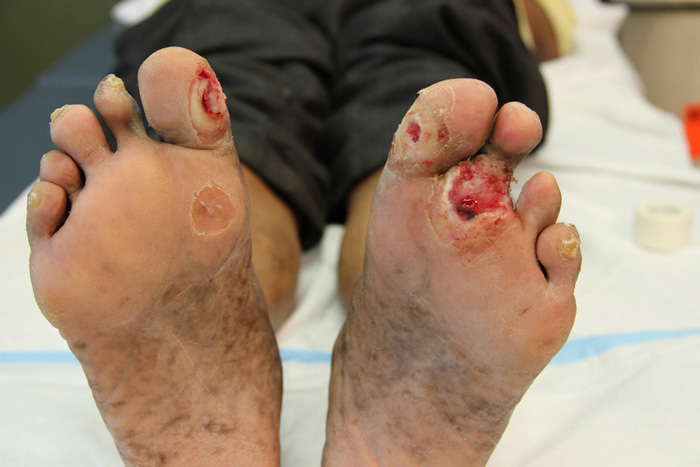
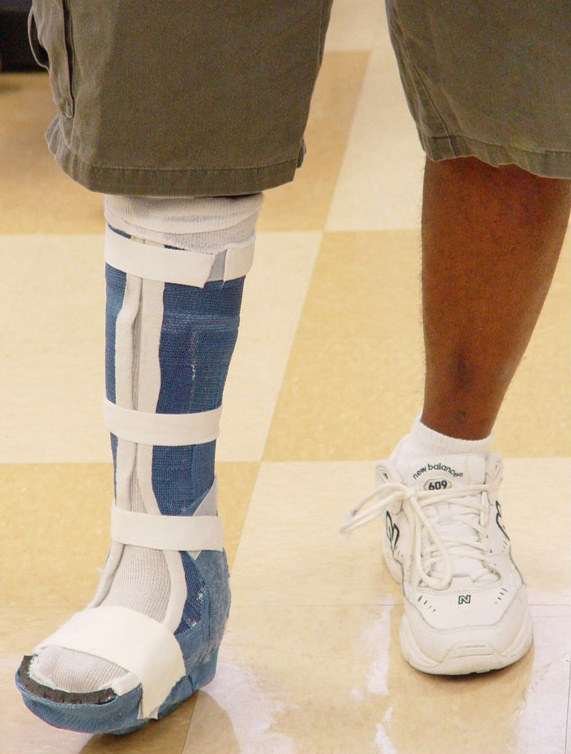
The most effective healing tools for plantar ulceration are the Total Contact Cast (TCC) and the Posterior Walking Splint (PWS).
If the TCC and PWS are not appropriate, alternative pressure relieving devices or healing devices such as the Carville Custom Sandal, Plastizote boot, prefab healing sandals/shoes can be fabricated, modified or augmented to offload the foot. Upon wound closure, permanent footwear and orthotics are fitted to prevent reulceration.
Equally critical to Dr. Brand's treatment approach is understanding and addressing the psychological ramifications of neuropathy that make treatment protocol sometimes difficult to follow. Neuropathy, specifically peripheral neuropathy, alters or eliminates a persons body perception, proprioception or touch/pain reception. The limbs no long er respond normally. This is significant because the perception of pain is the leading indicator of body malfunction, a consequence of bodily harm, without which a person can cause damage or continued damage to self with no awareness of injury. The client with a plantar ulcer typically will not walk into the clinic limping or complaining of pain. To compensate for this insensitivity to pain the patient, family members and health professionals have to make an extra effort to manage existing wounds. Visually inspecting and touching the feet daily for any evidence of new trauma or injury are essential habits to develop in an effort to protect the feet from injury. "Pain: The Gift Nobody Wants" is the title of one of Dr. Brand's books and a phrase used to initiate the explanation regarding the devastating consequences that can occur from limbs without the necessary warning system of pain.
Hands
Wounds on an insensitive hand are never a small matter.
A Wound Management Program includes:
- assessment,
- treatment,
- protection from further injury and
- patient education.
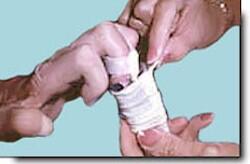
Unattended wounds invite infection that can damage or destroy the small joints and tendons of the hand. In hands with insensitivity, what often begins as a series of small injuries or an insidious infection can result in a gradual loss of soft tissue and bone reabsorption. The infection process is believed to be primarily responsible for the loss of finger length in insensitive hands. Abnormally high pressures, when holding or manipulating objects and muscle imbalances from nerve loss, also are responsible for loss of finger length and fingertip absorption. Studies at the National Hansen's Disease Programs have documented x-ray changes over a period of years showing finger shortening and circumferential reabsorption to be frequently associated with episodes of infection.
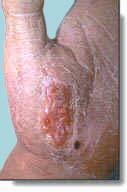
Patient education and early treatment is essential to minimize deformity. Patients are taught to examine insensitive extremities routinely for redness or swelling and to identify objects and equipment they use which may cause injury. Hot water from a faucet or a hot cup from a microwave may be enough to cause injury to patients with insensitive hands. Patients are taught to use areas where they do have "protective sensation" to test potentially damaging hot objects and to wear gloves when manipulating hot or sharp objects.
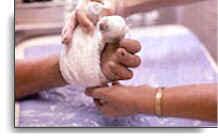
Splinting of wounds is often necessary for patients with insensitive hands in order to protect the affective area during healing. Only the minimum that needs to be immobilized is included in a dressing or splint, in order to keep the patient using the hand and increase their compliance with immobilization for the necessary period of healing.
Many wound management programs have been established to educate patients and healthcare workers in prevention of injuries and the need for aggressive treatment of all injuries in order to decrease the incidence of deformities.